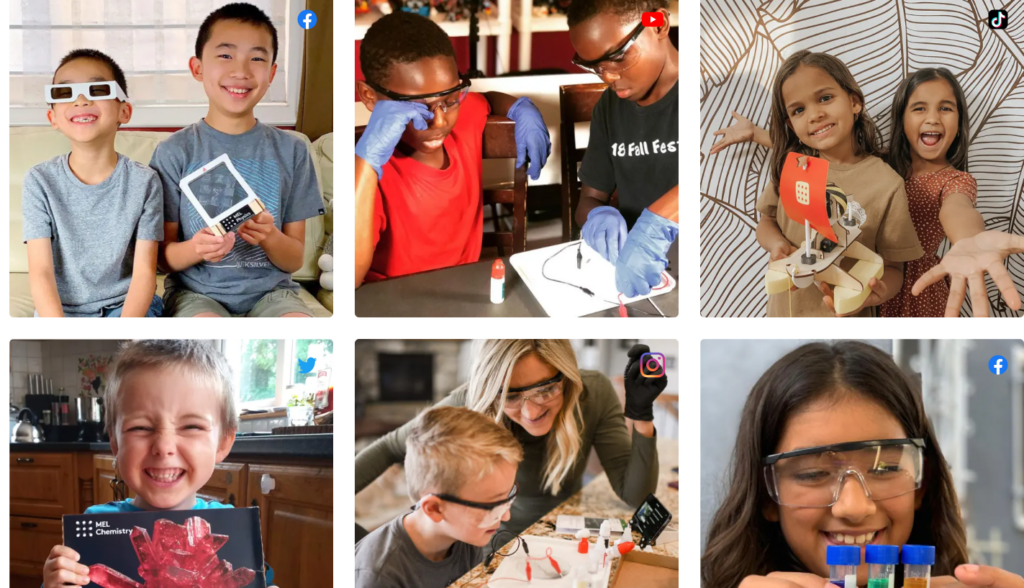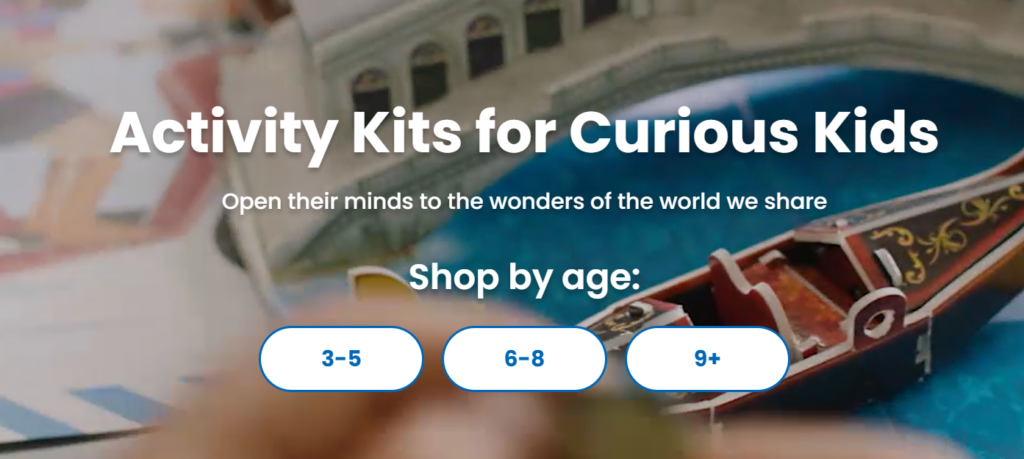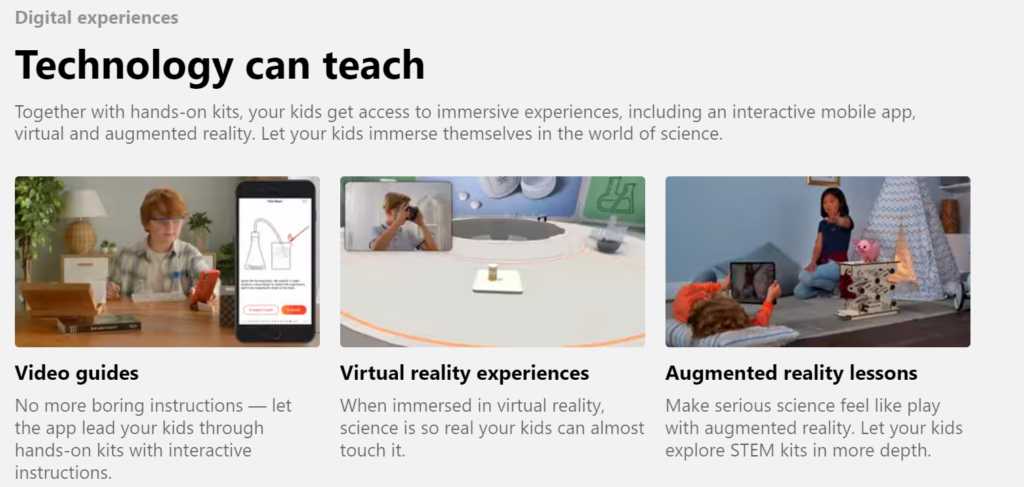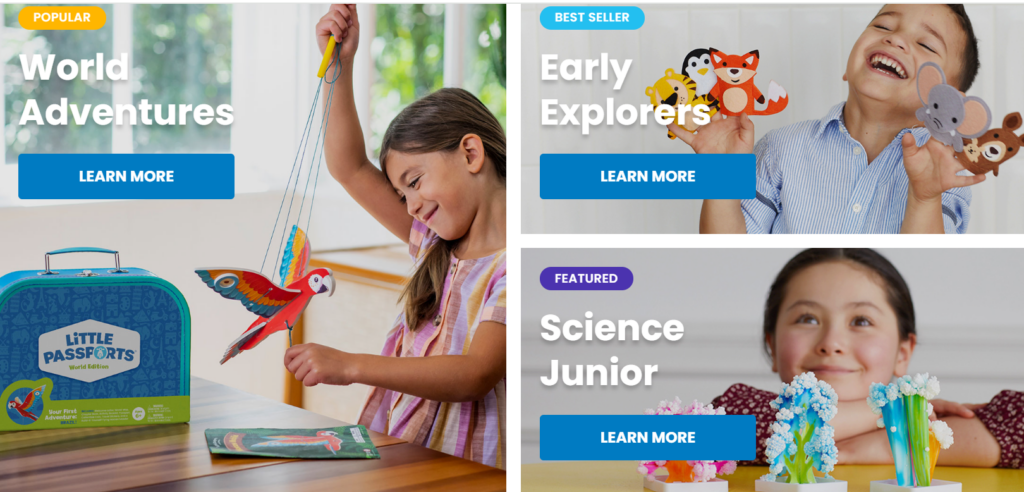In today’s fast-paced world, parents and educators are constantly seeking innovative ways to keep children engaged and motivated to learn. Subscription boxes that focus on hands-on education have emerged as popular tools to foster curiosity, creativity, and a love for STEM (Science, Technology, Engineering, and Mathematics) subjects.
Two of the leading platforms in this space are MEL Science and Little Passports. While both brands aim to provide educational experiences, they take different approaches to teaching science and exploration.
This detailed comparison will dive deep into the offerings of MEL Science and Little Passports, looking at their features, pricing, learning methodologies, and more to help you decide which subscription box is the best fit for your child’s learning journey.
Introduction
As technology continues to reshape the educational landscape, hands-on learning is proving to be an effective way to teach STEM concepts. Both MEL Science and Little Passports provide interactive educational experiences, but they serve different purposes.
MEL Science focuses primarily on hands-on science experiments, particularly in chemistry and physics, using virtual reality (VR) to enhance the learning process. Little Passports, on the other hand, takes a broader approach to learning by introducing kids to various subjects through a blend of science, geography, culture, and history.
While both platforms aim to spark curiosity and a love for learning, they target different audiences and age groups. This comparison will explore the unique aspects of each program and help you determine which subscription box aligns better with your child’s interests and educational needs.
Overview of MEL Science
MEL Science was founded in 2015 with the goal of making science education engaging and interactive through hands-on experiments. The company’s focus is on delivering monthly subscription boxes that allow kids to explore various scientific fields—primarily chemistry and physics. What sets MEL Science apart is its use of virtual reality (VR) to provide a more immersive learning experience. The kits are designed for children aged 9 to 16, although adults with a curiosity for science can enjoy them as well.

MEL Science provides three primary subscription options: MEL Chemistry, MEL Physics, and MEL STEM, each offering curated experiments that cover essential scientific concepts. The subscription includes everything needed for the experiments, from the chemicals and tools to safety gear, ensuring a complete learning experience. The combination of hands-on learning and VR technology makes MEL Science a unique educational platform.
Overview of Little Passports
Little Passports, founded in 2009, takes children on a journey around the world with its subscription boxes, which focus on exploring different cultures, geography, history, and science. The platform aims to cultivate a sense of adventure and discovery by introducing kids to new places, languages, and scientific concepts through interactive activities. Little Passports offers various themed subscriptions tailored to different age groups, starting as young as 3 years old.

Little Passports’ approach is to blend science with other subjects like culture and history, offering kids a well-rounded educational experience. The kits are designed to encourage curiosity about the world around them while subtly teaching STEM concepts. The company’s most popular subscription is the World Edition, but they also offer other options like Early Explorers, USA Edition, and Science Expeditions.
Features Comparison: MEL Science vs. Little Passports
1. Age Range and Audience
MEL Science:
- Designed for older children and teenagers (9-16 years old).
- The kits focus on advanced science topics, particularly in chemistry and physics.
- Ideal for children who are ready for more in-depth learning and are comfortable with hands-on experiments.
Little Passports:
- Caters to a much broader age range, with options for children as young as 3 years old up to around 12 years old.
- Offers various subscription types based on the child’s age and interests, from early explorers to budding scientists.
- Less focused on advanced science, and more on early learning, geography, and cultural exploration.
2. Learning Focus
MEL Science:
- Strong emphasis on chemistry and physics. Each kit is carefully designed to teach specific scientific concepts through experiments that follow international science curricula.
- Uses virtual reality (VR) to enhance the learning experience, allowing kids to visualize scientific phenomena in 3D environments.
- The hands-on nature of the experiments encourages critical thinking and problem-solving, making the platform ideal for STEM enthusiasts.
Little Passports:
- Focuses on multi-disciplinary learning by blending science, geography, culture, and history.
- Each kit takes kids on an adventure, teaching them about different countries, cultures, or scientific topics like volcanology or paleontology.
- Kits are more focused on introducing broad concepts rather than delving deeply into specific scientific fields, making them perfect for younger children or kids with general curiosity about the world.
3. Hands-On Learning and Experimentation
MEL Science:
- Provides advanced science kits with multiple experiments in each box, allowing kids to explore scientific principles in-depth.
- Includes chemicals, laboratory tools, and detailed instructions, making the experiments feel more like real-world scientific research.
- The VR app further extends the learning by visualizing concepts like molecular structures, chemical reactions, and physical processes in a 3D space.
Little Passports:
- While Little Passports’ Science Expeditions include some hands-on experiments, the kits are generally less intensive compared to MEL Science.
- The hands-on activities in Little Passports focus more on arts and crafts, building models, and interactive storytelling, particularly in their younger age subscriptions like Early Explorers and World Edition.
- The Science Expeditions boxes do offer more direct STEM learning, but they are typically simpler and more focused on younger children.
4. Technology Integration
MEL Science:
- MEL Science stands out for its integration of virtual reality. Each MEL Science subscription includes access to the VR app, which helps explain complex scientific phenomena in an interactive format.
- The VR app covers topics like atomic structures, molecular bonds, and physical processes, making abstract concepts easier to understand.
Little Passports:
- Little Passports does not incorporate VR or other cutting-edge technologies into its kits. Instead, it focuses on traditional hands-on learning methods such as crafting, model-building, and reading.
- The brand also offers online content, such as interactive games and videos, but these are not as technology-driven as MEL Science’s VR component.
5. Curriculum Structure
MEL Science:
- MEL Science follows a more structured learning path, with each experiment designed to build on previous knowledge, making it suitable for serious STEM learners.
- The kits are aligned with international science standards, making them an excellent supplement to formal education or homeschooling.
Little Passports:
- Little Passports provides a more exploratory and flexible learning experience. The kits are designed to spark curiosity and introduce new topics without following a strict curriculum.
- Perfect for children who prefer fun, story-based learning and exploration rather than a deep dive into scientific concepts.
Pricing Comparison: MEL Science vs. Little Passports
MEL Science Pricing:
- MEL Chemistry:
- Price: $34.90 per month, with 2-3 experiments per box.
- Annual subscription discount available, reducing the cost to $29.90 per month.
- Includes access to the MEL Science VR app, video lessons, and supplementary educational content.
- MEL Physics and MEL STEM:
- Similar pricing to MEL Chemistry: $34.90 per month.
- Annual subscription also available with a discount.

Little Passports Pricing:
- World Edition:
- Price: $27.95 per month or $25.95 per month with an annual subscription.
- Designed for ages 6-10, this subscription focuses on geography, cultures, and country-based activities.
- Early Explorers:
- Price: $27.95 per month or $25.95 per month with an annual subscription.
- Designed for ages 3-5, this kit introduces kids to themes like oceans, dinosaurs, and space.
- Science Expeditions:
- Price: $27.95 per month or $25.95 per month with an annual subscription.
- Suitable for children aged 6-10, Science Expeditions focuses on science-themed adventures like forensic science or rocketry.
- USA Edition:
- Price: $27.95 per month.
- A geography-focused kit that explores the 50 states of the U.S., designed for children aged 7-12.

FAQs
1. What age group is best suited for MEL Science?
MEL Science is designed for older children and teens aged 9-16, although adults who are interested in hands-on science experiments may also enjoy it. The kits are more advanced and require parental supervision for younger children.
2. Is Little Passports suitable for younger children?
Yes, Little Passports is perfect for younger children, with subscription options like Early Explorers designed specifically for kids as young as 3 years old. The platform offers a wide range of age-appropriate activities.
3. Does MEL Science include all the materials needed for experiments?
Yes, MEL Science includes all the necessary materials, chemicals, and tools in each kit, along with detailed instructions and safety gear.
4. Can I cancel or pause my subscription to either platform?
Both MEL Science and Little Passports offer flexible
Conclusion
When comparing MEL Science and Little Passports, it’s clear that both platforms offer enriching and engaging educational experiences, but they cater to different learning preferences, age groups, and goals. MEL Science is perfect for older children and teens (9-16 years) who have a keen interest in hands-on, in-depth STEM learning, especially in the fields of chemistry and physics.
The inclusion of virtual reality (VR) makes MEL Science stand out as a cutting-edge platform that not only provides hands-on experiments but also enhances the learning experience with immersive, 3D visualizations of complex scientific concepts. For families looking to supplement formal science education or for those homeschooling, MEL Science provides a structured, curriculum-aligned approach to STEM learning.
On the other hand, Little Passports is better suited for younger children (ages 3-12), offering a broader, more exploratory approach to education. It focuses not only on science but also introduces kids to geography, culture, history, and world exploration.
Little Passports is ideal for children who enjoy creative, story-driven learning experiences that nurture their curiosity about the world around them. With its diverse range of subscriptions catering to different age groups, it’s a fantastic option for families with multiple children looking for engaging, fun educational content that doesn’t delve too deeply into any one subject area.
Ultimately, the choice between MEL Science and Little Passports comes down to your child’s age, learning style, and interests. MEL Science is a better fit for older children passionate about science and who are ready for more challenging, experiment-based learning.
Little Passports, on the other hand, is an excellent option for younger learners who are just beginning their educational journey and want to explore a variety of topics in a fun and interactive way. Both platforms provide high-quality content that fosters a love for learning, making them excellent choices in the growing market of educational subscription boxes.



